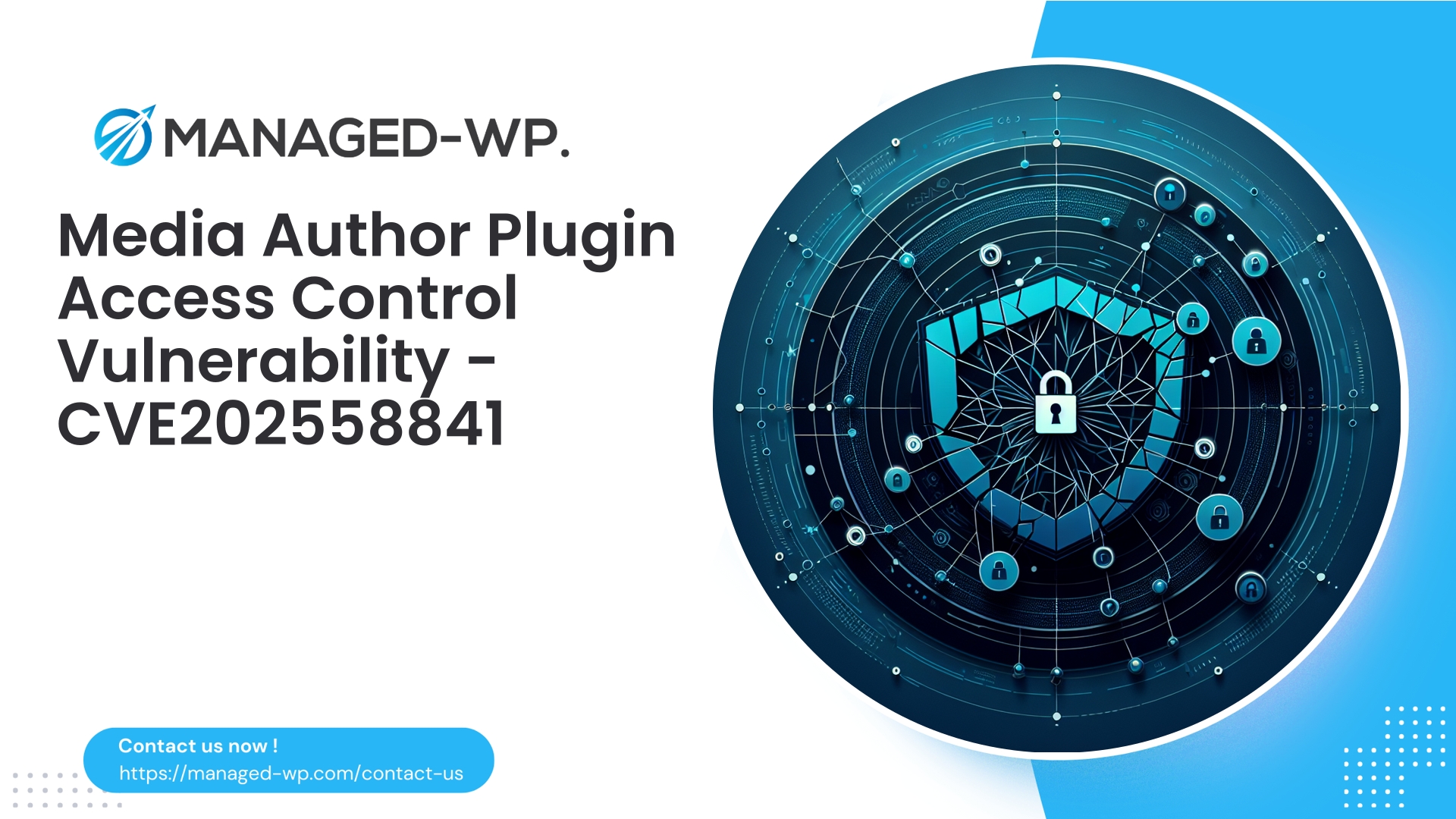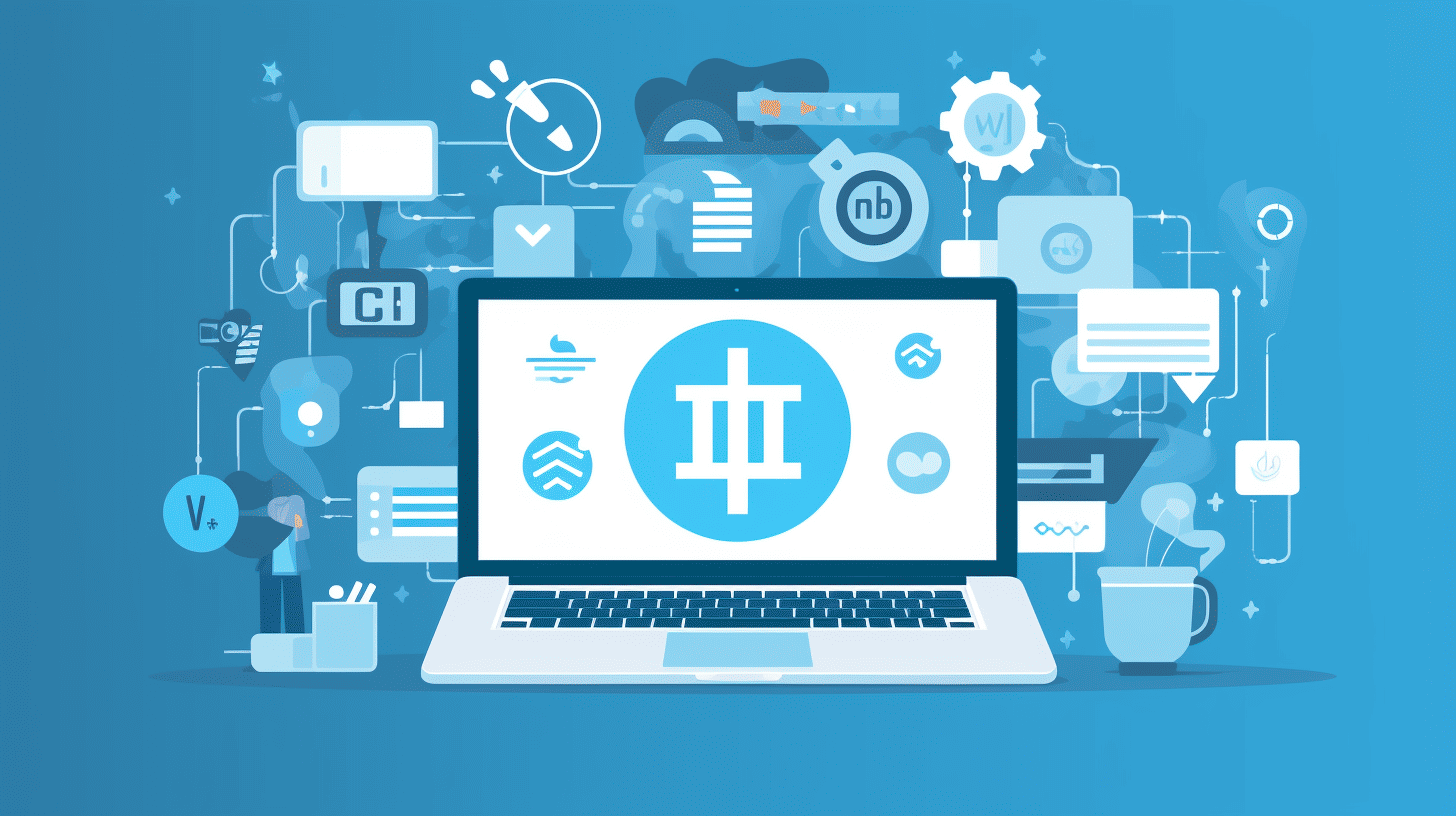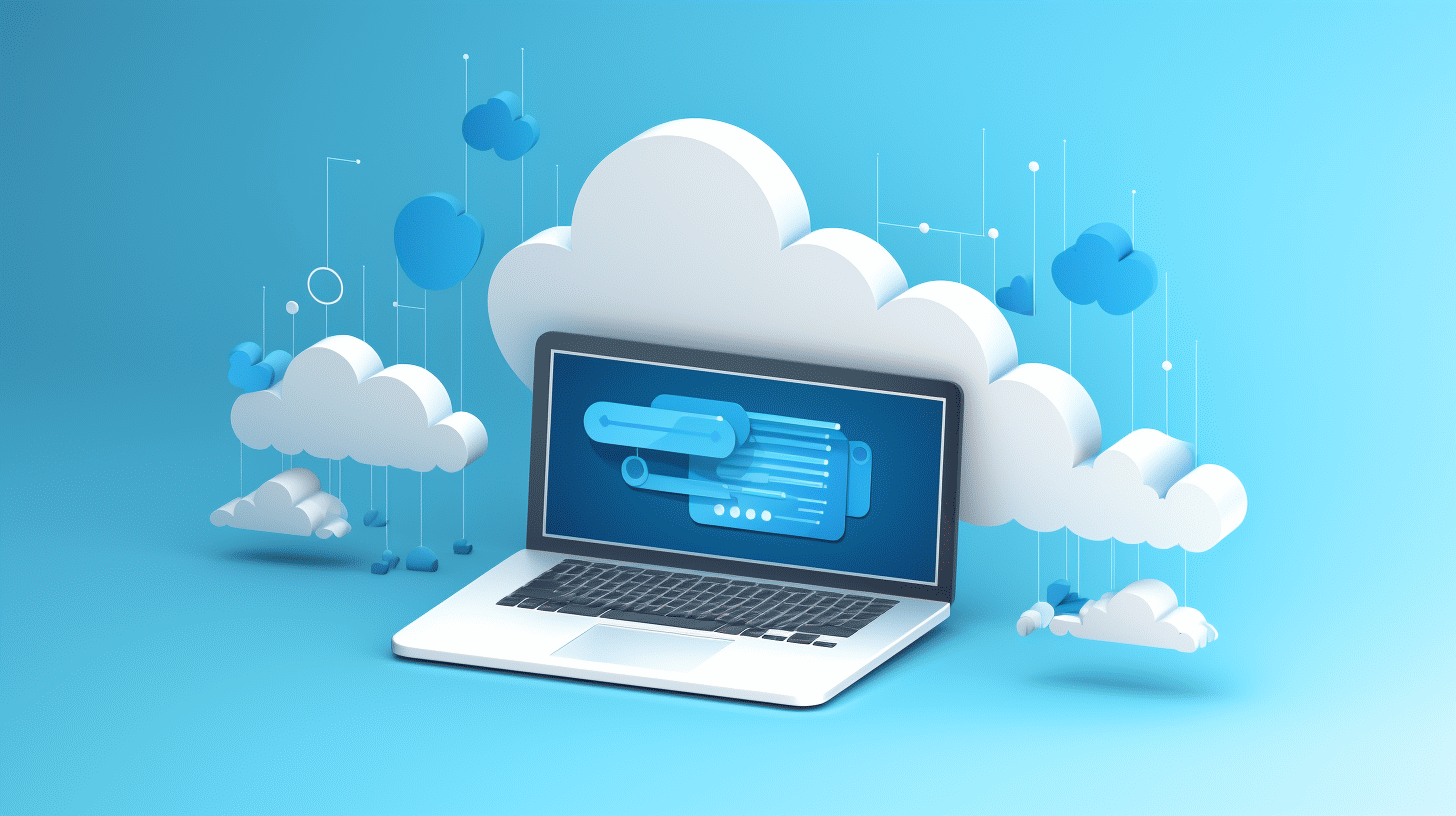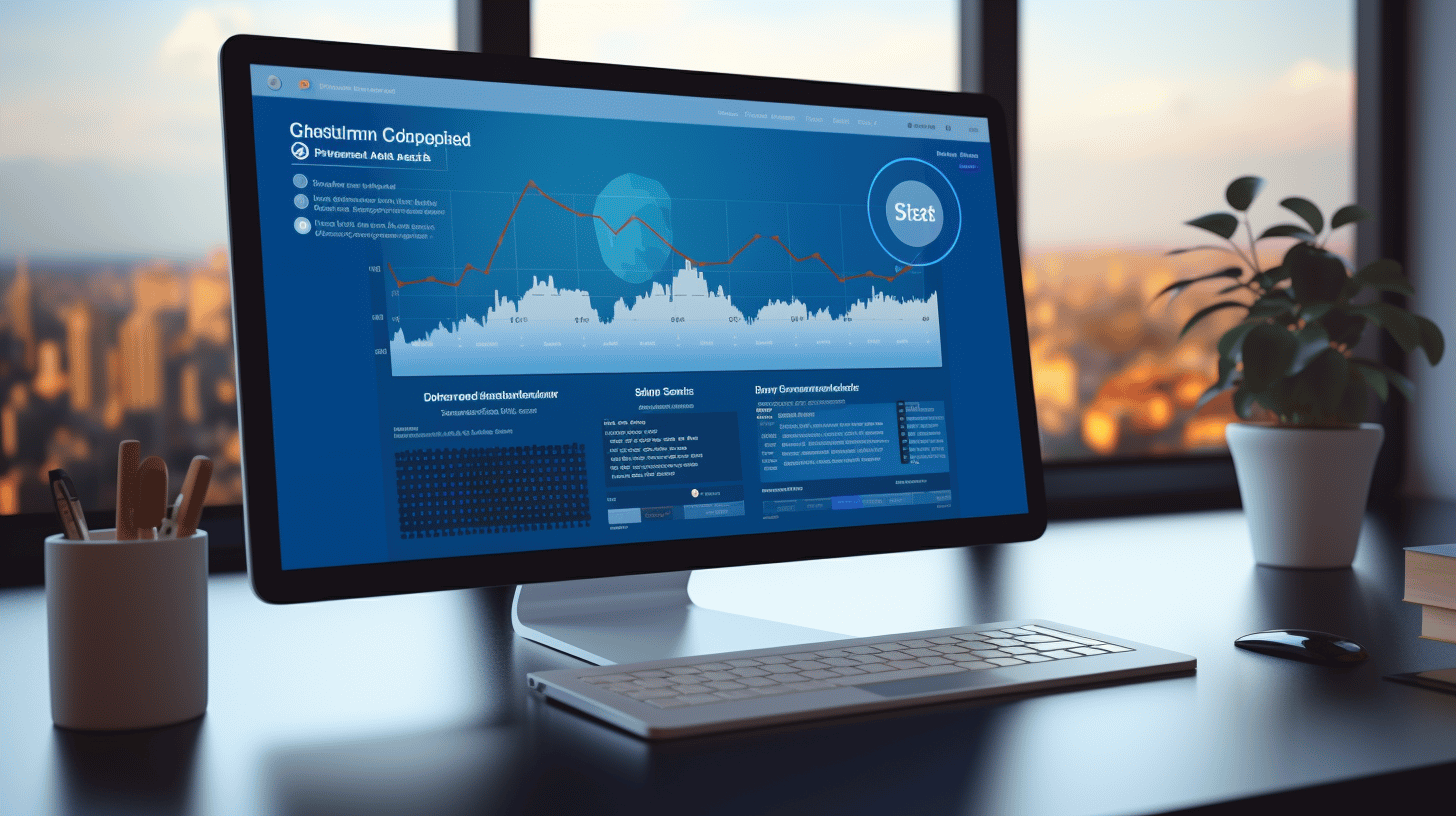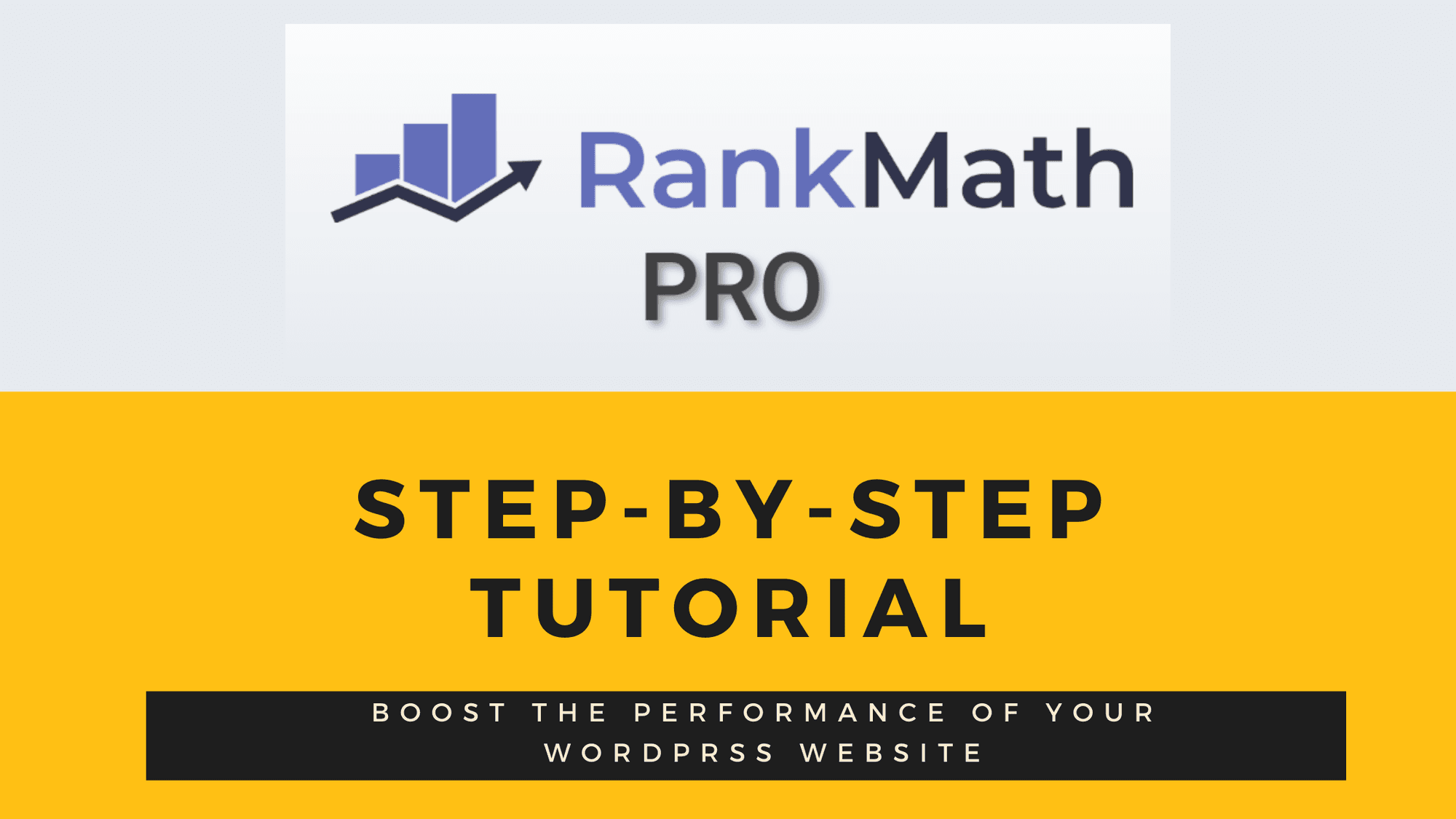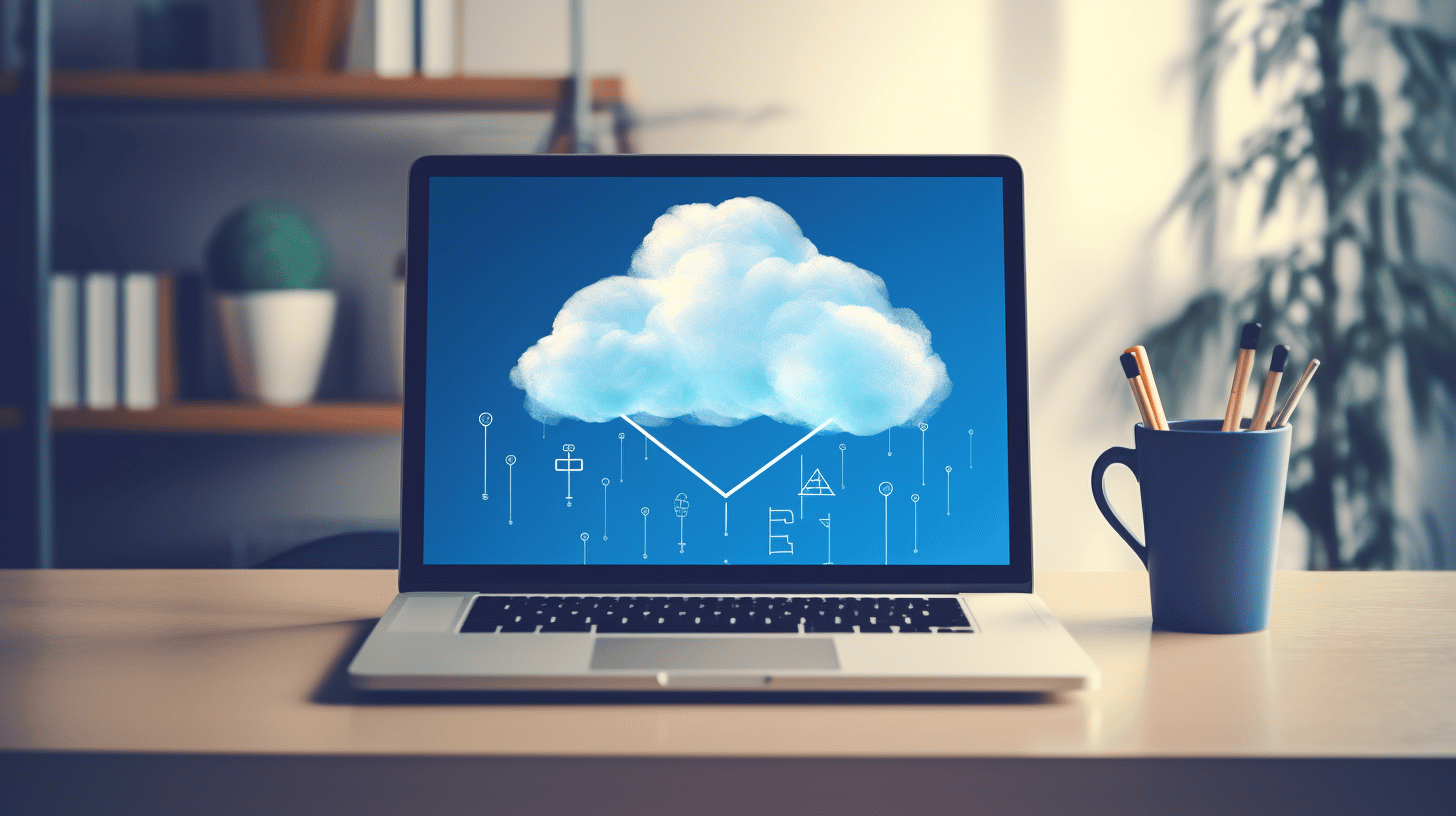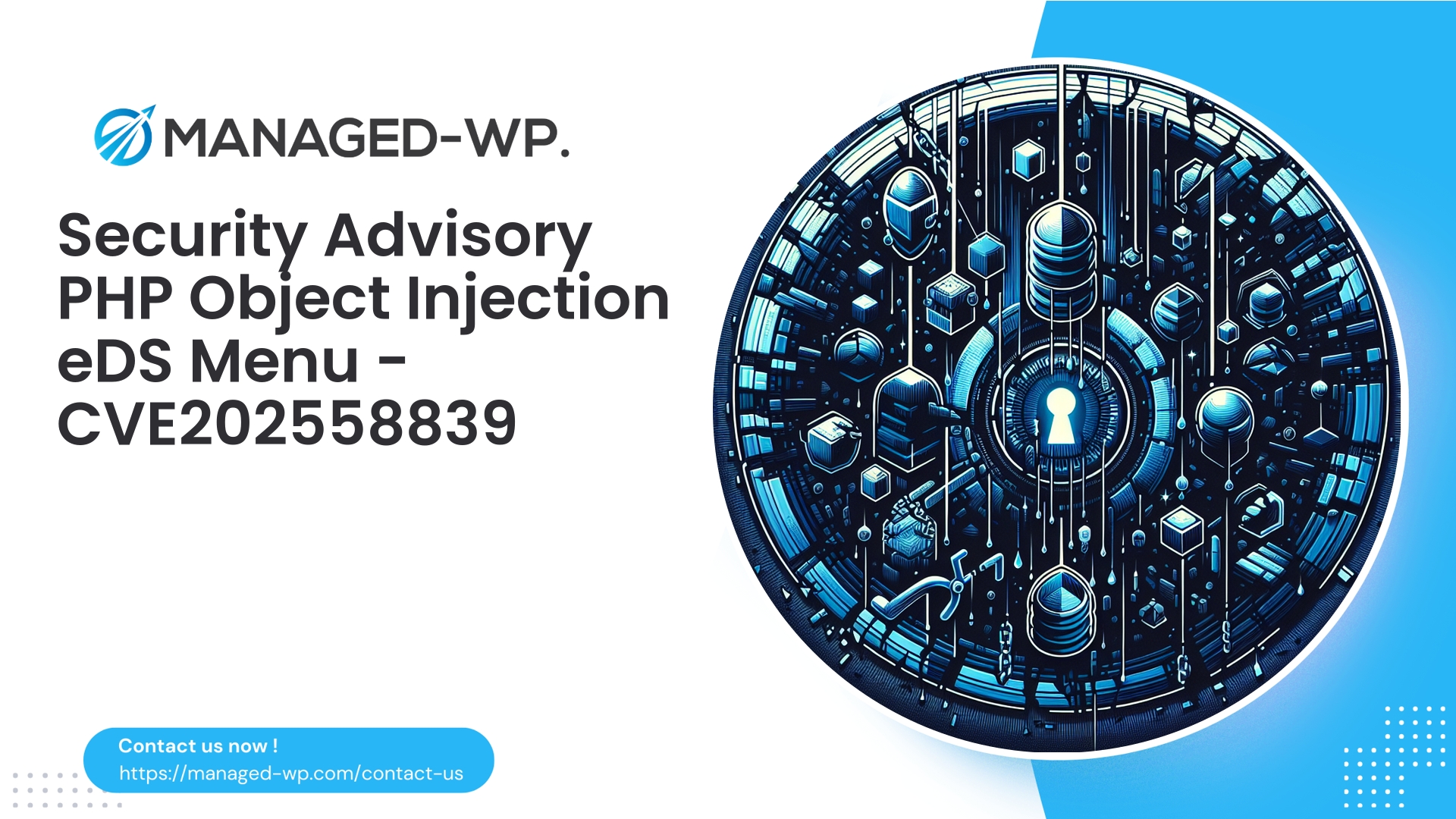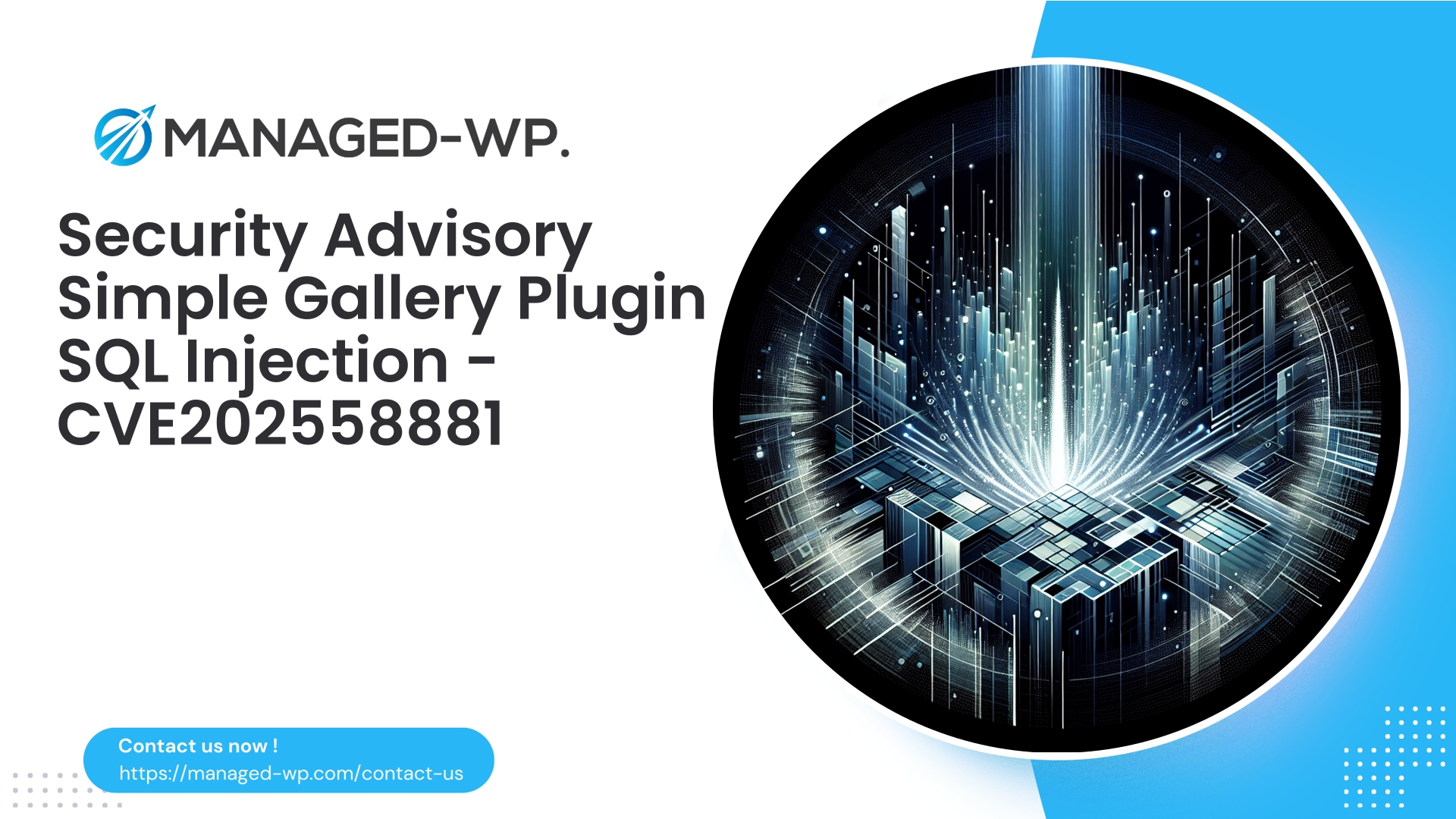| 插件名称 | 媒体作者 |
|---|---|
| 漏洞类型 | 访问控制失效 |
| CVE编号 | CVE-2025-58841 |
| 紧急 | 低的 |
| CVE 发布日期 | 2025-09-05 |
| 源网址 | CVE-2025-58841 |
Media Author 插件(≤ 1.0.4)— 访问控制失效 (CVE-2025-58841):风险、缓解措施以及 Managed-WP 如何保护您的网站
作者: 托管 WordPress 安全团队
日期: 2025-09-06
类别: WordPress 安全、漏洞、WAF
标签: 访问控制漏洞、CVE-2025-58841、WordPress、插件安全、虚拟补丁、Web应用防火墙
执行摘要
安全专家发现 Media Author WordPress 插件(版本 1.0.4 及更早版本)存在访问控制漏洞,漏洞编号为 CVE-2025-58841。由于插件代码库中授权和 nonce 检查不足,该漏洞使得具有 Author 角色的已认证用户能够执行未经授权的操作。
关键细节包括:
- 漏洞类型:访问控制失效(符合 OWASP A01 标准)
- 受影响的插件:Media Author 版本 ≤ 1.0.4
- CVE编号:CVE-2025-58841
- 利用此漏洞所需的权限级别:作者(已认证用户)
- CVSS 评分:5.5(中等至低,具体取决于部署环境)
- 官方补丁状态:截至发稿时尚未发布补丁;该插件似乎已停止维护。
在 Managed-WP,我们对影响 WordPress 生态系统的漏洞进行严谨的分析。以下是一份面向网站管理员、开发人员和托管安全团队的详细且实用的简报,概述了风险评估、检测方法、分步缓解策略,以及托管 Web 应用防火墙 (WAF) 如何在永久修复部署之前虚拟修补漏洞。
理解此场景中访问控制失效的原因
访问控制失效是指软件未能验证用户是否拥有执行某些操作的授权。在 WordPress 插件环境中,这通常表现为以下一种或多种情况:
- 缺少功能检查,例如未能使用
当前用户可以()在执行敏感操作之前 - 缺少或不充分的 nonce 验证
wp_verify_nonce()或类似机制 - 假设有权访问某些数据的用户应该拥有更广泛的修改权限,而无需进行验证。
- 利用绑定到特权插件函数的可预测或未受保护的内部 API 端点
对于 Media Author ≤ 1.0.4 版本,已通过身份验证的 Author 角色用户可以调用原本仅限更高权限角色使用的功能。这使得一些通常对 Author 角色无权执行的操作,例如修改文章元数据、媒体归属或触发管理插件操作,得以升级。
影响:
- 经过认证的作者帐户可能被滥用,用于提升权限或篡改数据。
- 拥有多个作者或贡献者账户的网站会暴露出更大的攻击面。
- 常见的攻击者策略包括入侵低权限账户,利用易受攻击的插件来获得更大的控制权。
谁需要采取行动
- 允许多位作者创建博客的网站,作者角色可以上传或修改内容。
- 新闻机构、内容机构和拥有众多中级编辑账号的会员网站。
- 过去一年内未更新但仍在运行此插件的网站。
- 缺少WAF或运行时安全层的网站。
如果该插件处于激活状态,并且您的网站允许作者级别的用户访问,那么尽管此问题的 CVSS 评级为中/低,但此问题仍具有时间紧迫性。
潜在的实际影响
影响程度很大程度上取决于站点配置和用户角色分配。例如:
- 内容篡改: 恶意作者可能会在帖子或媒体归属元数据中注入垃圾邮件或误导性数据。
- 持久性恶意软件: 潜在的滥用行为会导致后门文件或恶意上传(需要满足特定条件,漏洞利用细节不会公开披露)。
- 社会工程和网络钓鱼: 篡改媒体或作者字段可能会被用来欺骗网站访问者或利益相关者。
- 权限提升链: 该漏洞可与其他弱点相结合,成为攻击整个网站的跳板,最终导致网站完全被攻陷。
虽然作者默认情况下没有管理员权限,但此缺陷大大扩大了他们的操作范围,从而造成了严重的运营风险。
可利用性和可能性
增加因素:
- 作者账户数量过多或账户管理不善。
- 开放或宽松的用户注册机制,允许轻松创建账户。
- 插件在没有任何保护性WAF措施的情况下仍然处于激活状态且未打补丁。
- 插件弃用意味着没有厂商提供的补丁来阻止新出现的漏洞利用尝试。
减少因素:
- 严格管理用户角色,谨慎限制或监控作者。
- 部署主机级和应用级防御措施,包括防火墙和 mod_security 规则。
- 拥有严格审查和有限访问权限的私人编辑团队。
鉴于这些情况,Managed-WP 强烈建议将此漏洞视为高风险,并鼓励迅速采取缓解措施。
立即采取的缓解措施(分步指南)
如果您的系统上已安装并启用 Media Author 插件,为降低风险,请遵循以下建议:
- 审核插件是否存在
- 通过 WordPress 控制面板:访问 插件 → 已安装插件
- 命令行界面:运行
wp 插件状态媒体作者 - 找出所有启用此插件的多站点安装。
- 识别作者用户
- 仪表板: 用户 → 所有用户按“作者”角色筛选
- 命令行界面:
wp user list --role=author --fields=ID,user_login,user_email
- 遏制措施
- 首选: 尽可能立即停用插件:
- 仪表板: 插件 → 停用
- 命令行界面:
wp plugin deactivate media-author
- 如果停用插件会中断业务运营,请限制作者权限并启用 WAF 保护以最大程度地降低风险。
- (可选)暂时将作者帐户降级为贡献者角色:
- 命令行界面:
wp 用户设置角色贡献者
- 命令行界面:
- 首选: 尽可能立即停用插件:
- 加强账户安全
- 强制使用强密码。
- 为编辑帐户启用多因素身份验证 (MFA)。
- 审核并移除不活跃或可疑用户。
- 轮换管理员凭据。
- 监测活动
- 检查帖子和媒体是否存在可疑的修改。
- 审查
wp_posts和wp_postmeta记录意外变更信息。 - 分析 Web 服务器日志,查找对插件端点的异常调用。
- 定期运行可信的恶意软件扫描程序。
- 制定长期补救计划
- 用维护良好的替代插件替换该插件,或者移除受影响的功能。
- 如果没有其他选择,可以考虑在内部维护一个安全的分支,前提是具备相应的安全专业知识。
利用托管式 Web 应用程序防火墙 (WAF) 和虚拟补丁
托管式 WAF 通过实施虚拟补丁来阻止漏洞利用尝试,即使在没有官方插件修复的情况下,也能提供重要的运行时保护层。
Managed-WP 的 WAF 如何保护您的网站:
- 通过分析请求 URL 和参数,阻止针对易受攻击的插件端点的未经授权或低权限用户请求。
- 在应用程序网关级别强制执行 nonce 和能力检查。
- 应用速率限制来缓解暴力破解或快速攻击尝试。
- 阻止来自已知恶意IP地址的流量。
可执行的建议:
- 激活 Managed-WP 的 WAF 规则集,以防范 WordPress 插件漏洞。
- 启用自动虚拟修补(vPatch)以防止漏洞利用,同时修复根本原因。
- 设置实时警报,监控被阻止的攻击尝试,以便进行进一步调查。
笔记: 虚拟补丁是一种权宜之计,不能替代补丁或插件更换。它的作用是在安排永久性修复方案的同时争取宝贵的时间。
检测泄露迹象
注意以下潜在安全漏洞的迹象:
- 帖子或媒体内容发生意外更改。
- 可疑上传内容
/wp-content/uploads/目录,尤其是可执行文件。 - 未经授权创建管理员帐户。
- 修改了核心文件或插件文件,使其与官方版本不同。
- 执行模式异常的异常计划任务(定时任务)。
- 服务器向无法识别的 IP 地址或域名建立出站连接。
用于调查的实用只读命令:
- 查找最近修改的文件:
查找 . -type f -mtime -30
- 查询最近的帖子更改:
SELECT ID, post_title, post_date, post_modified, post_author FROM wp_posts WHERE post_modified >= DATE_SUB(NOW(), INTERVAL 30 DAY) ORDER BY post_modified DESC LIMIT 50;
- 查找上传文件中的可疑文件:
find wp-content/uploads -type f \( -iname "*.php" -o -iname "*.phtml" -o -iname "*.exe" \)
如果出现这些迹象,则将该地点视为已遭破坏,并进行控制和恢复。
遏制和事件响应工作流程
- 隔离受影响的环境
- 将网站下线或通过 IP 地址限制管理员访问权限。
- 调查期间显示维护页面。
- 保存法医证据
- 创建文件系统和数据库快照。
- 收集网络和系统日志。
- 进行重点恶意软件扫描
- 扫描是否存在 Web Shell、可疑的定时任务或未经授权的文件更改。
- 检查
wp-config.php篡改。
- 消除已知的后门
- 删除可疑文件和未经授权的管理员用户。
- 从干净的备份恢复(最佳实践)
- 将站点恢复到事故发生前的安全状态。
- 更新所有组件并轮换凭据。
- 必要时重建
- 使用已知的干净来源重建网站,并在适用情况下使用经过清理的内容。
- 事件后行动项目
- 轮换所有访问凭证。
- 审查用户角色并强制执行多因素身份验证。
- 如果违规事件的严重程度需要,请专业事件响应团队介入。
预防未来访问控制漏洞的最佳实践
- 遵循最小权限原则——除非绝对必要,否则避免授予作者上传或管理权限。
- 实施插件生命周期管理策略,移除或替换超过 6-12 个月未维护的插件。
- 定期进行安全测试,包括对插件进行静态扫描和运行时扫描。
- 使用特定于用户角色的条件访问控制来限制 REST 和 AJAX 端点。
- 确保所有插件开发都严格执行 nonce 验证和功能检查。
- 维护角色变更、管理员用户添加和插件更新的日志和警报。
- 定期进行备份并执行恢复测试,以验证恢复能力。
废弃插件的决策指南
当插件停止维护时,请考虑以下选项:
- 改用功能相同且维护良好的替代插件。
- 完全移除插件功能,并相应地调整工作流程。
- 只有当您拥有开发资源并遵循安全编码标准(包括漏洞扫描和负责任的披露)时,才应维护私有分支。
- 在规划长期替换方案时,可采用托管式 WAF 进行虚拟修补。
如果条件允许,更换插件是最可靠、最安全的方法。
Managed-WP针对此漏洞的建议
作为您值得信赖的安全合作伙伴,Managed-WP 建议您采用以下方法:
- 在任何可行的情况下,立即停用存在漏洞的 Media Author 插件。
- 如果无法立即停用,请启用 Managed-WP 的 Managed WAF,并应用相关的虚拟修补规则来阻止攻击尝试。
- 严格执行编辑帐户政策:限制作者权限,要求多因素身份验证,并进行用户审核。
- 制定计划,及时移除或替换不受支持的插件,并在安装前采取严格的插件审查流程。
- 利用 Managed-WP 的定期安全扫描和警报阈值来检测漏洞利用尝试和网站入侵的迹象。
我们的使命是在您执行强有力的补救策略时,为您提供即时的保护和运营意识。
建议的监控和WAF规则概念
Managed-WP 为应对此漏洞而部署的 WAF 规则示例包括:
- 阻止未经身份验证的用户访问插件管理端点。
- 强制要求插件 POST 请求中存在并验证 WordPress nonce。
- 阻止作者角色帐户触发管理员级别的插件操作。
- 对针对插件函数的快速 POST 请求应用速率限制。
- 阻止上传目录中已知的恶意上传文件名和可疑文件类型。
这些规则集会根据每次部署情况不断改进和定制,以最大限度地提高安全有效性。
管理员实用WP-CLI和SQL命令
请谨慎地在备份或测试环境中使用这些命令进行审核和修复。
- 列出已启用的插件:
wp plugin list --format=table
- 停用 Media Author 插件:
wp plugin deactivate media-author
- 枚举作者角色用户:
wp user list --role=author --fields=ID,user_login,user_email,display_name
- 更改用户角色示例:
wp 用户设置角色 42 贡献者
- 导出数据库备份:
wp db export backup-before-media-author-incident.sql
- 查询近期帖子修改情况:
wp db query "SELECT ID, post_title, post_modified, post_author FROM wp_posts WHERE post_modified >= DATE_SUB(NOW(), INTERVAL 30 DAY) ORDER BY post_modified DESC LIMIT 100"
这些指令有助于快速进行足迹分析和临时封锁。
多站点网络的注意事项
- 网络管理员应清点所有启用该插件的子站点,并根据流量和权限级别确定修复优先级。
- 可以通过以下方式停用全网插件:
wp plugin deactivate --network media-author
- 集中管理各子站点的角色和能力执行,监测潜在的跨站点污染。
法律、披露和沟通协议
- 如果用户数据受到影响,请立即遵守适用的数据泄露通知法律。
- 与网站所有者和编辑团队就补救措施进行清晰、迅速的沟通。
- 保存法医证据,以备专业事故响应部门使用。
结论
诸如 CVE-2025-58841 之类的访问控制漏洞暴露了插件安全方面的关键缺陷,可能会对多作者或协作网站造成重大影响。尽管 CVSS 评级为中等,但实际风险要求我们迅速识别、遏制和修复这些漏洞。
最有效的防御措施结合了即时的操作控制(插件停用、角色强化、虚拟修补)、勤勉的监控以及优先维护安全插件的长期策略。
通过将插件生命周期和安全管理集成到您的标准网站维护中,主动进行规划,以减少遭受这些反复出现的威胁的风险。
为什么 Managed-WP 的免费基础保护功能现在就能帮到您
在您评估或逐步淘汰存在漏洞的插件时,Managed-WP 的免费基础计划可提供必要的保护,以减轻与访问控制失效相关的直接风险:
- 使用自定义规则管理 WAF,以应对 WordPress 插件漏洞
- 无限带宽和屏蔽功能
- 内置恶意软件扫描功能,可检测注入的代码和可疑活动
- 缓解常见的 OWASP Top 10 网络风险
这些功能有助于保障您的编辑工作流程,并在您实施永久性修复时保持正常运行时间。了解更多信息或注册 Managed-WP Basic 计划,请点击此处: https://my.wp-firewall.com/buy/wp-firewall-free-plan/
立即行动:今天就加入 Managed-WP 的免费基础计划
使用 Managed-WP 的免费基础计划,立即保护您的网站——在规划插件修复方案的同时,立即加强您的防御:
https://my.wp-firewall.com/buy/wp-firewall-free-plan/
其他资源和建议的后续步骤
- 请确认 Media Author 插件是否已安装,并立即激活隔离检查清单。
- 联系我们的专家支持团队,获取有关分析被阻止的攻击尝试和调整虚拟补丁的帮助。
- 通过定期审核来建立或完善插件管理政策。
如需定制安全评估、自定义虚拟补丁开发和战略性补救计划,请通过您的仪表板联系 Managed-WP,或注册免费的基本保护计划以开始使用。
作者: 托管 WordPress 安全团队
接触: [email protected]











